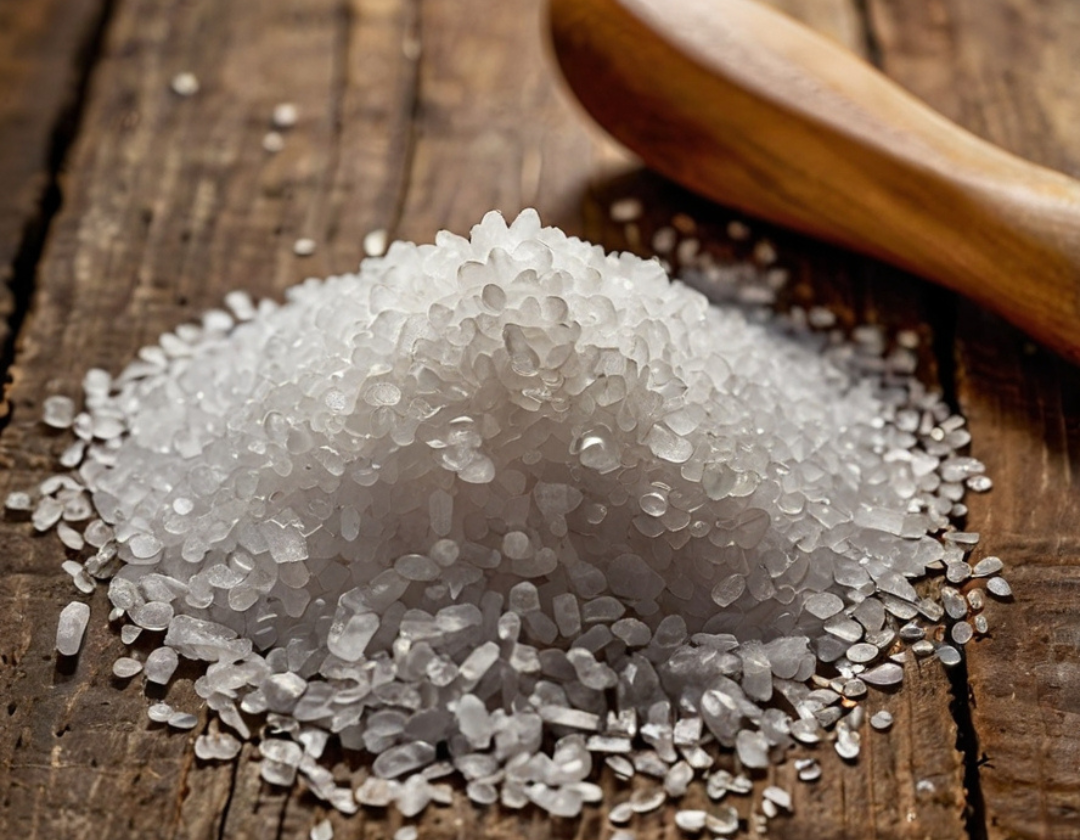Sodium is an essential mineral that plays a crucial role in maintaining fluid balance, transmitting nerve impulses, and supporting muscle function. While the body needs sodium to help transport water into cells, most people consume far more than the necessary amount, leading to serious health risks. The average American’s daily sodium intake is over 3,400 milligrams, more than double the recommended limit of 2,300 milligrams set by health authorities like the American Heart Association (AHA) and the Centers for Disease Control and Prevention (CDC). For those with high blood pressure, heart disease, or diabetes, the suggested limit is even lower, at 1,500 milligrams per day.
This article explores why cutting sodium intake is beneficial for the body, even though sodium is necessary for cellular functions. We’ll also look at the dangers of excess sodium, how reducing sodium can improve health outcomes, and practical ways to reduce sodium in your diet without compromising flavor.
Why the Body Needs Sodium
Sodium is a vital electrolyte that helps regulate various bodily functions. Here’s a look at why it is important:
- Fluid Balance: Sodium helps maintain the right balance of fluids inside and outside of cells. It works with other electrolytes like potassium to regulate the movement of water and other nutrients across cell membranes.
- Nerve Function: Sodium is essential for transmitting nerve impulses. It creates electrical gradients that allow signals to be sent throughout the nervous system.
- Muscle Contraction: Sodium plays a role in muscle contraction, including the contraction of the heart muscle. It works alongside calcium and potassium to ensure muscles respond correctly to nerve signals.
While these functions highlight the importance of sodium, it’s worth noting that very little sodium is needed to carry them out—about 500 milligrams per day is sufficient for most people. In modern diets, sodium levels far exceed what the body actually requires.
The Dangers of Excess Sodium Consumption
Excessive sodium intake can disrupt the body’s balance and lead to several health problems. Here’s how too much sodium can negatively impact your health:
1. High Blood Pressure (Hypertension)
Sodium attracts water, so consuming too much of it can increase the volume of blood in the bloodstream, leading to higher blood pressure. High blood pressure is a significant risk factor for cardiovascular diseases, including heart attacks and strokes. According to the World Health Organization (WHO), reducing sodium intake is one of the most effective ways to prevent hypertension and its associated health risks.
2. Heart Disease and Stroke
High sodium levels contribute to the hardening and narrowing of arteries, a condition known as atherosclerosis. This increases the risk of heart disease and stroke. Research published in the journal Circulation found that cutting sodium intake by just 1,000 milligrams a day can reduce blood pressure and lower the risk of heart-related events by up to 30%.
3. Kidney Damage
The kidneys play a key role in regulating sodium levels in the body. When sodium intake is excessive, the kidneys must work harder to excrete the excess, which can strain the organs over time. High sodium levels can also lead to the formation of kidney stones and worsen existing kidney conditions.
4. Bone Health
Excess sodium can cause the body to lose calcium, which is excreted through urine. This can weaken bones over time and increase the risk of osteoporosis, particularly in individuals who already have low calcium intake.
5. Water Retention and Bloating
High sodium levels can cause the body to retain water, leading to bloating and puffiness, particularly in the face, hands, and feet. Reducing sodium intake can help alleviate these symptoms and promote a feeling of lightness.
How Reducing Sodium Intake Benefits the Body
Cutting down on sodium can have immediate and long-term health benefits. Here’s a look at how reducing sodium intake improves bodily functions:
1. Improved Blood Pressure Regulation
Studies have consistently shown that reducing sodium intake helps lower blood pressure. For people with hypertension, even modest reductions in sodium can have significant effects. Lower blood pressure reduces the strain on the heart and arteries, helping to prevent cardiovascular complications.
2. Decreased Risk of Heart Disease and Stroke
As sodium intake decreases, so does the risk of heart disease and stroke. By consuming less sodium, the likelihood of developing conditions such as atherosclerosis diminishes. This is particularly important for individuals with a family history of heart disease.
3. Enhanced Kidney Function
Reducing sodium intake eases the burden on the kidneys, allowing them to function more effectively. This is especially beneficial for people with chronic kidney disease or those at risk of kidney stones.
4. Better Bone Health
Lower sodium consumption can help preserve calcium levels in the body, supporting stronger bones. It’s a particularly important dietary change for individuals at risk for osteoporosis, including postmenopausal women.
5. Less Bloating and Fluid Retention
A reduction in sodium can also help reduce bloating and fluid retention, making you feel lighter and more comfortable. This can be particularly helpful for athletes or people who experience swelling due to conditions like lymphedema.
Balancing Sodium Intake: The Role of Potassium
While reducing sodium is important, it’s also crucial to maintain a healthy balance of potassium. Potassium helps counteract the effects of sodium by relaxing blood vessels, aiding in the excretion of sodium, and lowering blood pressure. Foods high in potassium include:
- Bananas
- Sweet potatoes
- Spinach
- Avocados
- Oranges
Incorporating these potassium-rich foods into your diet can further enhance the benefits of reducing sodium, creating a balanced approach to electrolyte management.
Practical Tips for Cutting Sodium Without Losing Flavor
Reducing sodium in your diet doesn’t mean sacrificing taste. Here are some practical ways to lower your sodium intake while still enjoying delicious meals:
1. Cook at Home
Preparing meals at home allows you to control the amount of salt you use. Using fresh ingredients instead of processed foods significantly reduces sodium levels in your diet.
2. Use Herbs and Spices
Instead of reaching for the salt shaker, flavor your meals with herbs and spices like basil, oregano, thyme, garlic, and black pepper. These add depth to your dishes without increasing sodium content.
3. Choose Low-Sodium Products
When shopping, look for low-sodium or sodium-free versions of common items like broth, canned vegetables, and sauces. Be mindful of labels that state “reduced sodium,” as these products can still contain significant amounts of salt.
4. Rinse Canned Foods
If you use canned beans or vegetables, rinse them thoroughly under cold water to wash away excess sodium.
5. Limit High-Sodium Condiments
Condiments such as soy sauce, ketchup, and salad dressings are often loaded with sodium. Opt for low-sodium alternatives or make your own versions at home.
6. Gradually Reduce Salt
If you’re accustomed to a high-sodium diet, gradually reduce your salt intake to allow your taste buds to adjust. Over time, your preference for salty foods will diminish.
Conclusion: Small Changes, Big Impact
While sodium is necessary for essential bodily functions like fluid balance and nerve transmission, most people consume far more than they need. The consequences of excessive sodium intake, such as hypertension, heart disease, and kidney damage, underscore the importance of moderating sodium consumption.
By cutting sodium intake, you can significantly improve your health outcomes, reduce the risk of chronic diseases, and feel better overall. It’s not just about avoiding health problems—it’s about taking proactive steps to enhance your quality of life. By cooking at home with low-sodium recipes, such as those offered by platforms like RecipeShop.net, you can make healthy, flavorful eating a daily habit.
Small changes in your diet can indeed make a big impact. Start today, and take control of your health, one meal at a time.
Sources:
- Centers for Disease Control and Prevention (CDC). “Sodium and Your Health.” CDC.gov
- American Heart Association (AHA). “How Salt Affects Heart Health.” Heart.org
- World Health Organization (WHO). “Salt Reduction.” WHO.int







